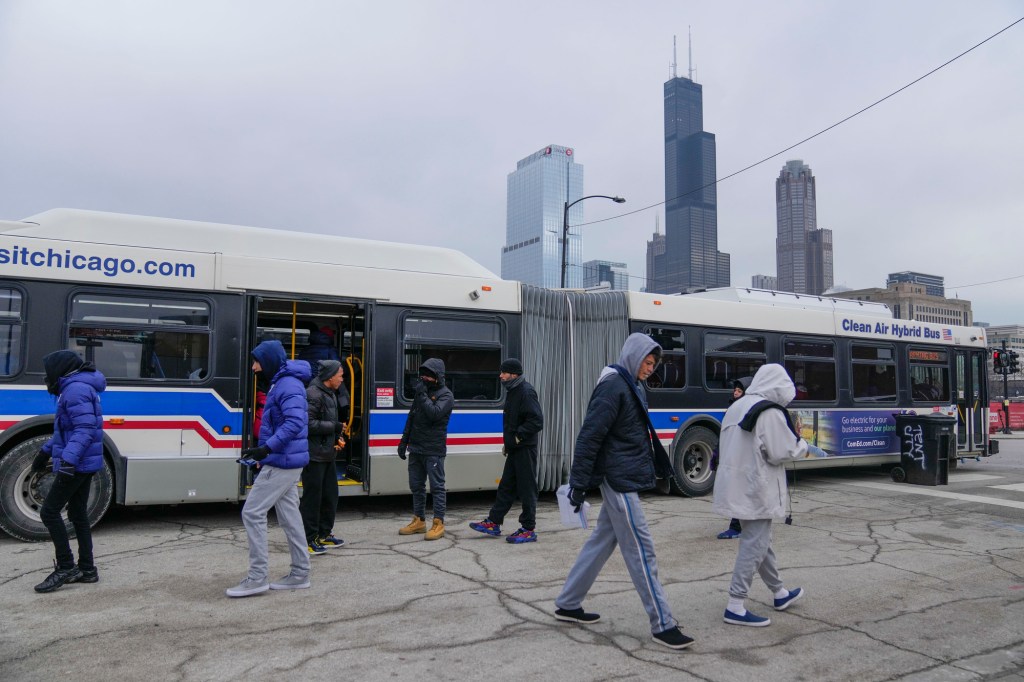By Sophia Tareen and Melissa Perez Winder | Associated Press
CHICAGO — As temperatures hover below freezing in Chicago, dozens of asylum-seekers are staying in the lower level of a library until the bitter cold gripping much of the country lifts.
But after that, Chicago’s plans for offering immediate shelter to the growing number of migrants arriving in the nation’s third-largest city remain murky.
For more than a year, Chicago has wrestled with how to house new arrivals until shelter space is free, utilizing measures that city leaders insist are a stopgap. Last week, it was parked city buses. Before that it was police station lobbies and airports. The makeshift approach has frazzled volunteers, nonprofit groups and migrants wary of the lack of a long-term plan, particularly during the city’s long winters.
“The city’s favorite word for everything is ‘temporary,’” said Vianney Marzullo, a volunteer who has helped migrants staying at O’Hare International Airport. “It’s their new choice of Band-Aid word. Everything is temporary, temporary, temporary.”
Chicago has struggled, like New York and Denver, to deal with the crisis that started in 2022 when migrants began arriving in Democratic-led cities, largely at the direction of Texas Gov. Greg Abbott. The winter weather has further complicated efforts. Last week, New York, which has received more than 170,000 migrants, evacuated a massive tent camp ahead of a storm. Big city mayors have asked repeatedly for more federal help.
Chicago’s response has stood out for its haphazard approach with a heavy reliance on volunteers who have spent more than a year providing medical care, food and donated items.
City leaders say the situation keeps changing and there have been snags along the way.
Mayor Brandon Johnson floated the idea of a heated tent encampment, but construction was scrapped over the risk of contaminants at the former industrial site.
The city had instituted a 60-day limit for…
Read the full article here







